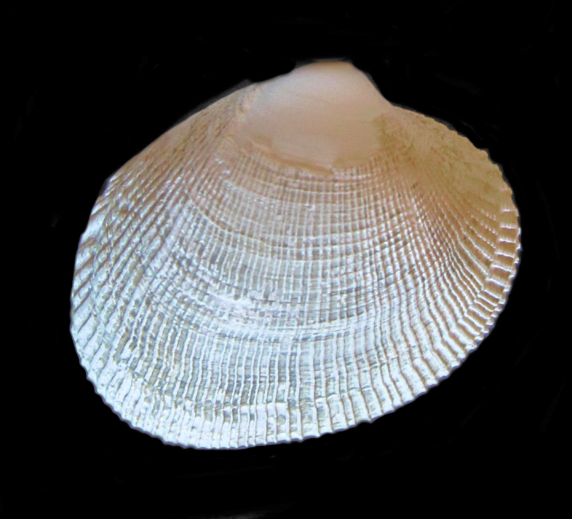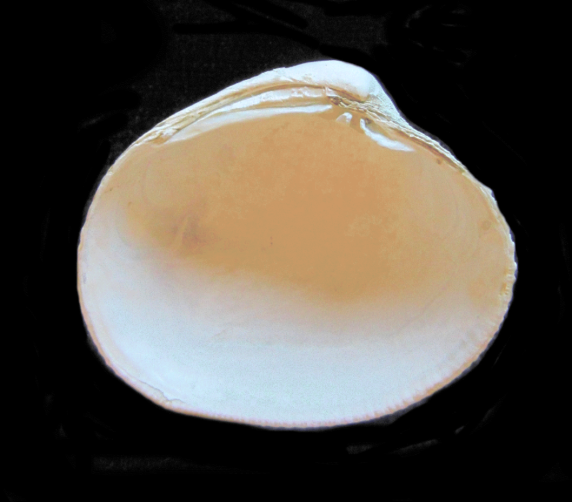Common Littleneck Clam Shell, Leukoma staminea

 Common Littleneck Clam Shell, Leukoma staminea. Shell collected in the greater San Diego area, San Diego, California, July 2016. Size: 6.9 cm (2.7 inches) x 5.9 cm (2.3 inches). Collection, photograph and identification courtesy of Bob Hillis, Ivins, Utah.
Common Littleneck Clam Shell, Leukoma staminea. Shell collected in the greater San Diego area, San Diego, California, July 2016. Size: 6.9 cm (2.7 inches) x 5.9 cm (2.3 inches). Collection, photograph and identification courtesy of Bob Hillis, Ivins, Utah.
The Common Littleneck Clam, Leukoma staminea (Conrad, 1837), is a Venus Clam of the Veneridae Family. They are known in Mexico as almejuela comu’n. It has a somewhat inflated with an oval profile and a moderate beak. The exterior of the shell is sculpted with numerous, fine, radiating ribs, numerous, fine, concentric lines, and a few, heavy, concentric ridges and the margin is finely crenulated. The exterior of the shell is cream, tan or white in color, with brown specks or chevrons; the interior is cream colored. The Common Littleneck Clam shells reach 8.0 cm (3.1 inches) in length and 6.8 cm (2.7 inches) in height.
Common Littlenecks are found over and within sand and mud substrate in bays intertidally to depths up to 150 feet. They are also found in gravel, under loose rocks, along the open coastline. They range from Alaska to at least Magdalena Bay, Baja California Sur along the west coast of the Baja Peninsula. They are not found in the Sea of Cortez.
Synonyms include Chione ruderata, Paphia staminea, Protothaca grewingkii, Protothaca staminea, Tapes diversa, Tapes tumida, Venerupis petiti, Venus ampliata, Venus conradi, Venus mundulus, Venus pectunculoides, Venus rigida, and Venus stamina.